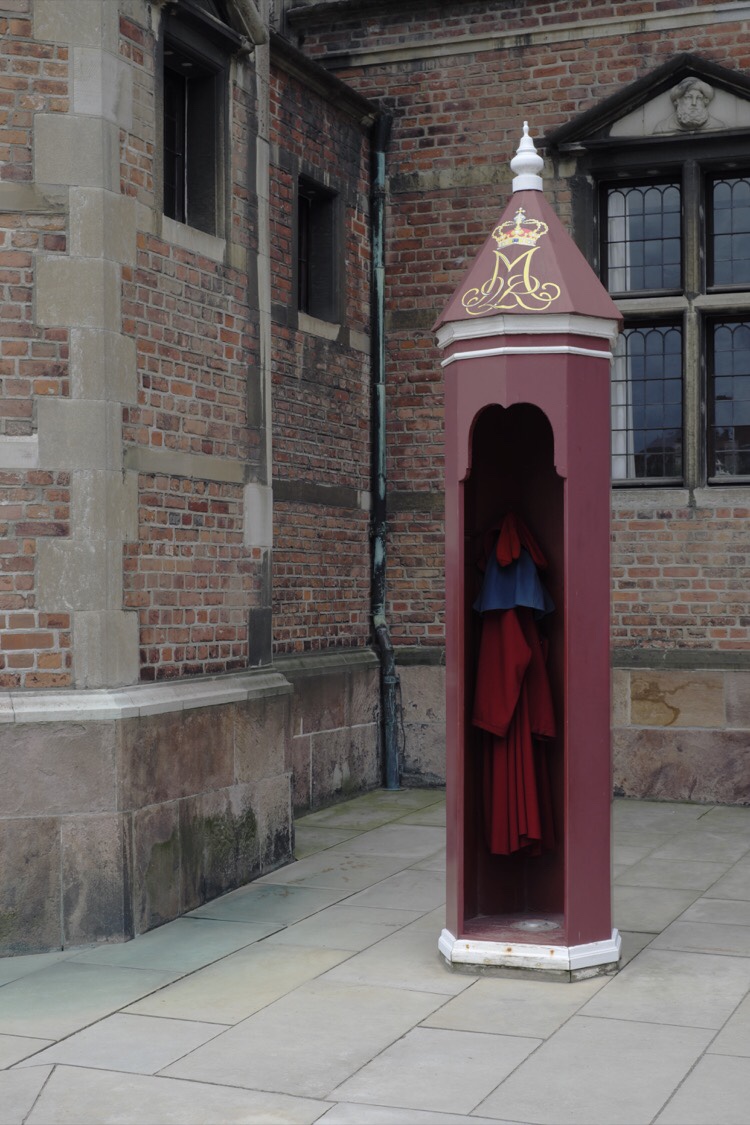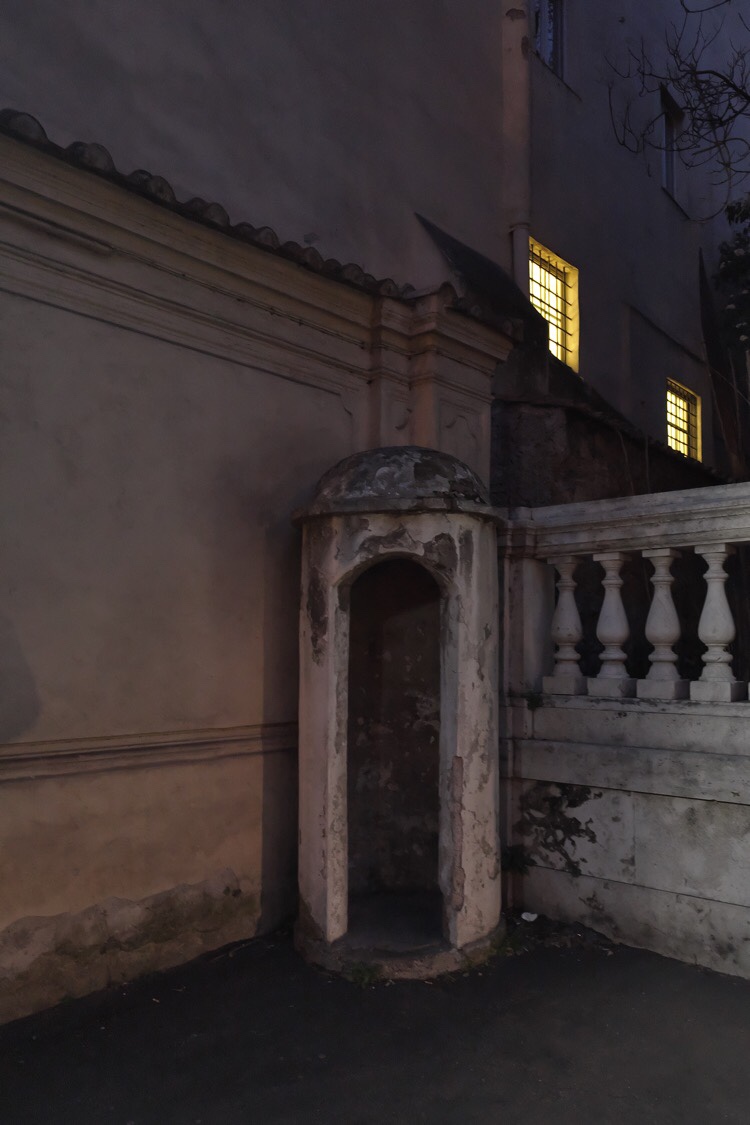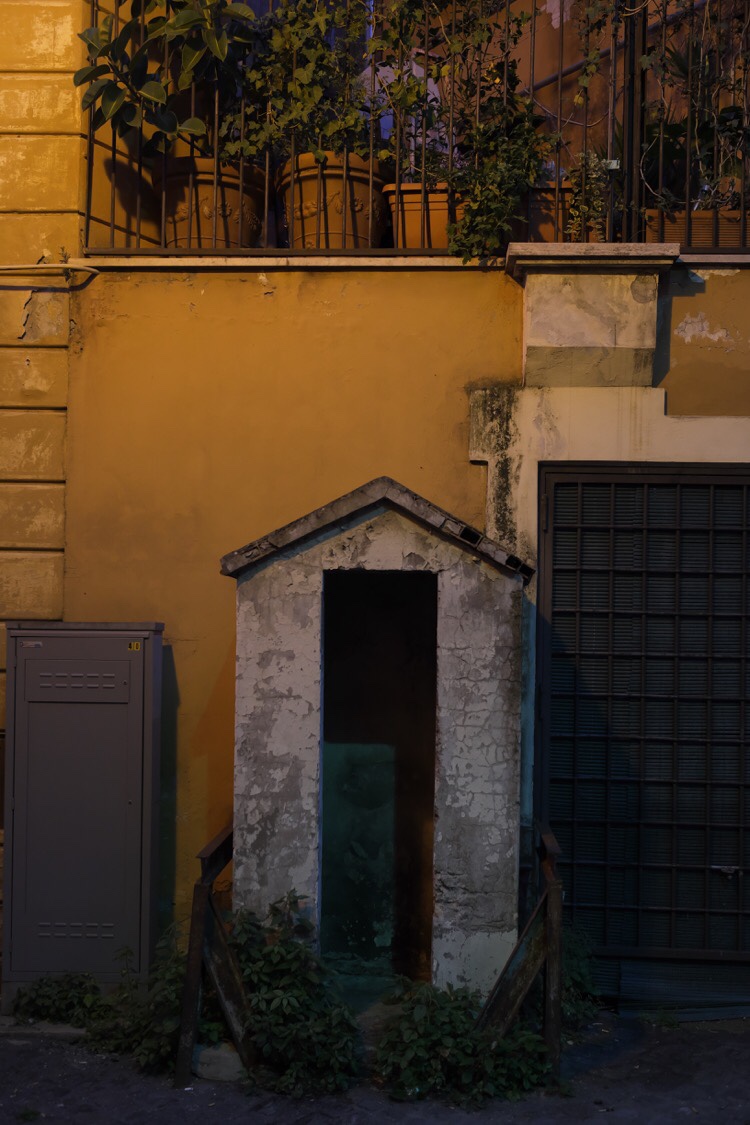
The sentry box or watch-post is about as small as a habitable piece of architecture can be. Only slightly taller than the sentry’s headgear and barely wider than their body – just enough space to shrug off an outer layer of clothing or stand back from the elements.
The sentry box has inherent complexities and contradictions, it ensures passers-by see that they are being silently observed; symbolically it guards a building or controls a territory but an individual sentry (or pair) is exposed and could easily be overwhelmed; it is a stand-alone structure but usually ancillary to a grander building; the box is usually a lightweight construction and temporary but the sentry stood stock-still implies solidity and permanence; it provides shelter but because the view is blinkered it should only be used in extremis, and then the open side belies its insufficiency.
The architecture of the sentry box is an expression of roof, walls and an opening, very limited but essentially the same elements as a small temple and with scope for simple or stylistic treatment. The size means small gestures can imply a grander scheme quite easily.

The first box has a curvaceous pelmet above the opening giving the sentry box a curtained character, accentuated by the finial (nominally the top of a tent-pole) and folds of the cape inside.
The second, a carabinieri post, with its domed roof, thick walls and arched doorway feels heavy and could be the entrance to a grotto or catacomb.
The third, another carabinieri post, has a simple pitched roof and unadorned opening, vernacular in essence but the dents and cracks in the paintwork are relatively large giving it a geological grandeur.
